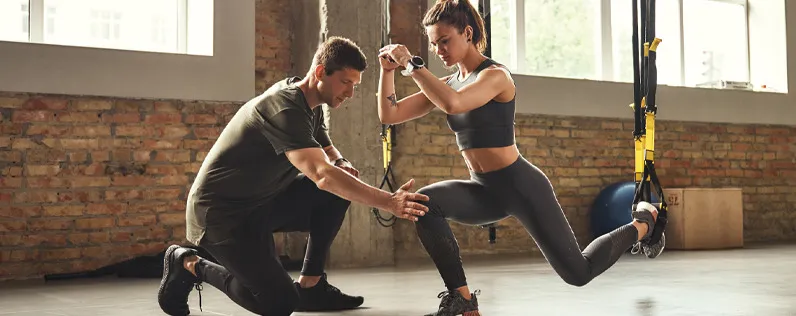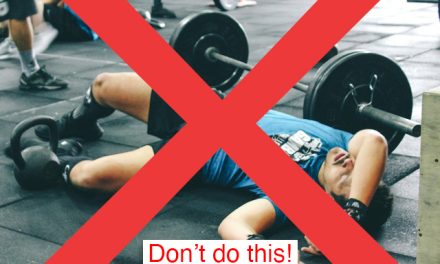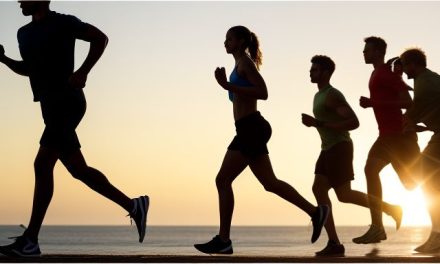In this article:
Safeguarding Longevity: The Critical Role of Injury Prevention

Image courtesy of Constant Contact
Injuries are an inevitable part of life, but their impact on our health span—the period during which we enjoy a high quality of life—and longevity can be profound. This is especially true as we age, where the consequences of an injury can extend far beyond the immediate pain and recovery period. Let’s delve into why preventing injuries is crucial, supported by scientific evidence, and how personal trainers can play a pivotal role in this preventative approach.
The High Cost of Hip Injuries in the Elderly
In a 8.5-year study, people who sat the most (watching TV) had a 61% greater risk of dying than those who watched TV less than one hour per day.
For the elderly, a hip injury is not just a setback; it can be a life-altering event. Research has shown that older individuals who suffer from a hip fracture are significantly more likely to face mortality in the subsequent years. A population-based study highlighted that, after a hip injury, the 1-year postoperative mortality was 27.3%, with mortality after hip fracture reaching 79.0% during the following few years. A study published in the journal Applied Sciences developed a mortality risk model for elderly hip fracture patients, revealing a marked decrease in the first-year mortality rate from 21.5% in 2001 to 15.0% in 2010, thanks to improved care systems and surgical techniques. These statistics underscore the importance of injury prevention, particularly for the elderly, to enhance longevity and maintain a higher health span. Remember, people who watched the most TV in a 8.5-year study had a 61% greater risk of dying than those who watched less than one hour per day. This means that being bedridden due to injury, as well as being unable to walk or move freely, is the worst thing that can happen for your health. Not includin an actual, serious disease, of course.

Courtesy of University of Colorado Boulder, included in the course “Science of Exercise”
Detraining: The Rapid Loss of Training Benefits

More than 50% of the gains obtained from 5 weeks of endurance training (the red line) are lost in 1 week following an injury (the yellow line), and all of the adaptations gains are lost in 4-5 weeks. Image of courtesy of University of Colorado Boulder, included in the course “Science of Exercise”
More than 50% of the gains obtained from 5 weeks of endurance training are lost in 1 week following an injury or lack of training
The journey to fitness is often long and requires consistent effort. However, the reversal of these gains, known as detraining, can occur much more swiftly. Scientific literature indicates that the loss of strength and hypertrophy from detraining happens at a faster pace than the gains made during training, even in younger individuals. A systematic review in the journal Muscles found that significant decreases in muscle strength and hypertrophy occur during detraining periods, although some strength gains may persist for 16–24 weeks post-training. This highlights the critical role of continuous training and the risks associated with interruptions due to injuries.
The Domino Effect of Injuries on Posture and Long-Term Health
Injuries can force individuals to alter their posture or movement patterns, potentially leading to imbalances and a cascade of long-term health effects. For instance, an exploratory study published in BMC Public Health investigated the impacts of posture changes on office worker productivity and found that posture changes could have an immediate improvement in productivity. While this study focused on productivity, it hints at the broader implications of posture changes on overall health. Another systematic review in the same journal examined the association between physical activity and body posture, suggesting that while there is a correlation, multiple biopsychosocial factors may influence human posture. These findings suggest that injuries affecting posture can have complex and lasting consequences on an individual’s health and well-being.
The Role of Personal Trainers in Injury Prevention
Personal trainers are uniquely positioned to help individuals avoid injuries. By designing tailored exercise programs, providing guidance on proper technique, and advocating for a balanced approach to fitness, personal trainers can significantly reduce the risk of injuries. They can also educate clients on the importance of maintaining an active lifestyle to prevent the rapid loss of training benefits and support strategies to improve posture and movement patterns, thereby mitigating the long-term effects of potential injuries.
Discover how a personal trainer can help you reduce the risk of injury in our article Crafting A Balanced Workout Routine: Performance, Fitness, And Injury Prevention
In conclusion, the prevention of injuries is paramount for sustaining a high health span and ensuring longevity. The evidence is clear: injuries, especially in the elderly, can drastically shorten life expectancy and diminish quality of life. Detraining can rapidly erase the hard-earned benefits of exercise, and injuries that affect posture can lead to a domino effect of health issues.
Personal trainers play a vital role in this preventative narrative, helping individuals stay safe, active, and healthy for the long haul. By prioritizing injury prevention, we can all look forward to a future of sustained well-being and vitality.
For more tips on maintaining health and youthfulness at any age, explore our comprehensive article:
The 10 most efficient, scientifically proven habits to stay young and fit at any age
References:
- Lo, C.-L.; Yang, Y.-H.; Hsu, C.-J.; Chen, C.-Y.; Huang, W.-C.; Tang, P.-L.; Renn, J.-H. Development of a Mortality Risk Model in Elderly Hip Fracture Patients by Different Analytical Approaches. Appl. Sci. 2020, 10, 6787. https://doi.org/10.3390/app10196787
- Panula J, Pihlajamäki H, Mattila VM, Jaatinen P, Vahlberg T, Aarnio P, Kivelä SL. Mortality and cause of death in hip fracture patients aged 65 or older: a population-based study. BMC Musculoskelet Disord. 2011 May 20;12:105. doi: 10.1186/1471-2474-12-105. PMID: 21599967; PMCID: PMC3118151.
- Psilander N, Eftestøl E, Cumming KT, Juvkam I, Ekblom MM, Sunding K, Wernbom M, Holmberg HC, Ekblom B, Bruusgaard JC, Raastad T, Gundersen K. Effects of training, detraining, and retraining on strength, hypertrophy, and myonuclear number in human skeletal muscle. J Appl Physiol (1985). 2019 Jun 1;126(6):1636-1645. doi: 10.1152/japplphysiol.00917.2018. Epub 2019 Apr 11. PMID: 30991013.
- Encarnação, I.G.A.; Viana, R.B.; Soares, S.R.S.; Freitas, E.D.S.; de Lira, C.A.B.; Ferreira-Junior, J.B. Effects of Detraining on Muscle Strength and Hypertrophy Induced by Resistance Training: A Systematic Review. Muscles 2022, 1, 1-15. https://doi.org/10.3390/muscles1010001
- Wang, H., Yu, D., Zeng, Y. et al. Quantifying the impacts of posture changes on office worker productivity: an exploratory study using effective computer interactions as a real-time indicator. BMC Public Health 23, 2198 (2023). https://doi.org/10.1186/s12889-023-17100-w
- Salsali M, Sheikhhoseini R, Sayyadi P, Hides JA, Dadfar M, Piri H. Association between physical activity and body posture: a systematic review and meta-analysis. BMC Public Health. 2023 Aug 30;23(1):1670. doi: 10.1186/s12889-023-16617-4. PMID: 37649076; PMCID: PMC10470156.
- Zheng J, Pan T, Jiang Y, Shen Y. Effects of Short- and Long-Term Detraining on Maximal Oxygen Uptake in Athletes: A Systematic Review and Meta-Analysis. Biomed Res Int. 2022 Aug 16;2022:2130993. doi: 10.1155/2022/2130993. PMID: 36017396; PMCID: PMC9398774.
Disclaimer
Consult a health professional before making significant changes to your diet, exercise routine, or supplement regimen. The information provided in this blog is intended to convey the latest scientific research in an accessible manner. However, it does not replace the advice of a medical professional. Take your health conditions into account and consult a qualified healthcare provider to ensure that the decisions you make are safe and appropriate for your specific health needs. Ultimately, you are responsible for your own health and well-being.




